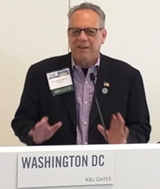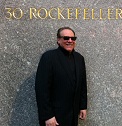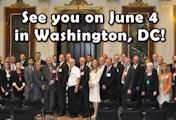I would like to share with you two Nanocentric articles that are relevant to our Community.
Our first article is written by our good friend Scott Rickert, CEO of Nanofilm http://www.nanofilmtechnology.com/index.aspx?bhcp=1 and NanoBusiness Board member. Mr. Rickert’s insight as a Nanotechnology entrepreneur is an interesting read.
NANOTECHNOLOGY: SIX TO WATCH IN ’12
A look back at 2011 nano-topics, pointing the way in 2012.
By Scott E. Rickert
Dec. 21, 2011
http://www.industryweek.com/articles/nanotechnology_six_to_watch_in_12_26211.aspx?SectionID=4
It’s been a year, hasn’t it? Not always as good as we’d hoped, but never as dark as we feared. My take? We’ve learned. And with that knowledge, we’re moving on. That’s why this month I’m making some prognostications about 2012 by revisiting our hottest topics in 2011.
The #1, #2 and #3 Nano-Topics to Watch in 2012 are the same as for 2011: globalization, commercialization and partnership – as I reported from Zurich, Cyprus and Boston gatherings. It’s clear that we can’t talk about one without the others – the SWOT analysis brings them all to the table. Is it a threat to America’s technology leadership? An opportunity for our innovators? A call for more government funding? A plea for less interference? All that and more.
So my advice for 2012? Get on with it. The world is going to keep getting flatter. That’s why I’ve been to talk business in India, the Middle East and Europe during the fourth quarter. Others are doing the same. This month India announced a NanoPark near the Mumbai airport to serve the 50+ nanocompanies there looking for worldwide commercialization partners. China held a conference in October for 500 R&D, industry, government and investment leaders to explore public-private commercialization partnerships – including a couple of America’s best-known consumer and nanotech names – plus companies from Japan, Iran, Israel, Germany and Korea.
And what about funding for commercialization in the U.S.? The 2012 Obama administration budget, with its $2.1 billion for nanotechnology, still languishes in Congress, and the 2013 version is likely to face the same fate. It’s an important facet to the jobs creation plans in the government’s Advanced Manufacturing Partnership program, so it may get at least some of the attention it deserves.
But here’s the really interesting development that happened in November. The National Nanotechnology Initiative made a formal response to questions about commercialization progress from the President’s Council of Advisors on Science and Technology (PCAST). Some pundits suggest PCAST was challenging the value of the billions of tax dollars already invested. The good news? There was plenty to say. Speakers reeled off activities for some 7,800 projects, touching all 50 states and involving 15 agencies, from the Department of Defense to the National Institutes of Health.
There’s cause for concern, of course. A university nanotechnology institute warns that other countries are building (and spending!) to rival our government program. Lux Research cautions that Europe may surpass the U.S. in nanotechnology-enabled products by 2015 unless we take an aggressive commercialization stance.
Still, there’s plenty of encouraging commercialization news. Nanomedicine and environmentally friendlier nano-enabled batteries, both topics we explored here in 2011, continue to have breakthroughs.
Hot topic #4 in our nano review was how nanotechnology is making hydraulic fracturing, or “fracking,” for oil and natural gas faster, easier – and more environmentally friendly. Despite recent concerns about a Wyoming location, statistics count seven billion barrels of oil and 600 trillion cubic feet of natural gas in safe results. And, I’d bet my bottom dollar that future eco-improvements will be nano-enabled ones.
That’s the perfect segue to Topic #5: environmental health and safety concerns. Work by the EPA, FDA and other regulators continues apace, as do the efforts of private industry. While I saw a flurry of panic early in the year, the mood now is calm, focused and reasonable.
We need to keep it that way – because of Topic #6: nano-terrorism. Remember September’s column about the package bomb mailed to nanotech faculty at a Mexico university? I had expected to call an “all-clear” – until December 7. That’s the day another professor in Mexico suffered minor burns from a letter bomb. No one has yet claimed responsibility and authorities aren’t ready to speculate – or even name the addressee. And, while the college is installing metal detectors, no one is slowing down their research.
So let’s close out 2011 on a positive note, too, by a stop by the geek-chic nanotechnology t-shirts we donned in July’s column. Favorite then: “Nanotechnology. Don’t sweat the big stuff.” New favorite: “Grey Goo. There’s greater risk from the back of your fridge.” The perfect sentiment for a Happy Nano New Year greeting.
Scott E. Rickert is chief executive of Nanofilm, Ltd.
——————————————————————-
Our second article is a technical analysis of SBIR reauthorization brought to us by By David T. Ralston, Jr., Partner, Foley & Lardner LLP
CONGRESS FINALLY REAUTHORIZES SBIR/STTR PROGRAMS AND DECIDES TO PERMIT OWNERSHIP OF SBIR APPLICANTS BY VENTURE CAPITAL ENTITIES
After more than five years of debate and legislative battles, Congress recently re-authorized the Small Business Innovation Research Program (SBIR) and Small Business Technology Transfer Program (STTR) for six years, ending September 30, 2017, as part of the National Defense Authorization Act of 2012, H.R. 1540. In addition to the reauthorization, H.R. 1540 permits federal agencies to allocate a portion of their SBIR funding for small business concerns (SBCs) owned by multiple venture capital firms, private equity firms, and hedge funds (collectively herein VC entities), and requires that the U.S. Small Business Administration (SBA) issue new regulations governing SBIR program participation by such SBC applicants. The outcome will be dramatic changes in the SBA’s rules concerning affiliation and citizenship of SBCs with VC entity investment.
Provided in this article is a quick assessment of the provisions permitting VC entity investment in SBIR participants. These changes will be a major discussion topic in 2012 as H.R. 1540 mandates that the SBA issue proposed regulations implementing the new approach to VC entity investment by mid-April 2012 (within 120 days of H.R. 1540’s enactment), and adopt final rules by December 2012.
As to agency SBIR funding, H.R. 1540 provides that the National Institutes of Health (NIH), the Department of Energy (DOE) and the National Science Foundation (NSF) may award up to 25% of their annual SBIR funding to SBIR applicants that are SBCs majority-owned by multiple VC entities. All other federal agencies may award up to 15% of their annual SBIR funding to such applicants. The impact of this provision is to cap agency SBIR funding for SBC applicants majority-owned by multiple VC entities, and thereby preserve the lion’s share of SBIR funding for all other applicants.
To implement the 25/15% funding authority, NIH, DOE, NSF or another agency desiring to make such grants must first file a determination with Congress that SBIR awards to such SBC applicants are necessary to induce needed investment by VC entities in small business research and are consistent with the agency’s SBIR program. Furthermore, SBC applicants that are majority-owned by multiple VC entities must register with the SBA, thereby providing public notice of their application status.
Turning to SBIR applications by SBCs owned by VC entities, the statute, after setting out supportive Congressional intent, directs the SBA to issue new regulations permitting SBIR participation by SBCs majority-owned by multiple VC entities (unless such an SBIR applicant is: (1) a large business, (2) owned or controlled by a large business, or (3) is, or is majority owned by, a foreign entity or non-U.S. citizen). To accomplish that goal, H.R. 1540 effectively mandates that the SBA’s new regulations revise (1) the applicable SBIR size standards, (2) the related “affiliation” rules governing SBC SBIR applicants and VC entities, and (3) the rules governing U.S. citizenship of SBC SBIR applicants.
Current SBA rules effectively limit VC entity investment in SBIR applicants to a minority position, using a combination of the SBA’s size standard and the SBA’s “affiliation” rules, plus a restrictive U.S. citizenship requirement. In short, if a VC entity or group of VC entities with common shareholders holds a controlling interest in an SBIR applicant, the SBA deems the VC entity (or the VC entity group) and the entire portfolio of investments held by the VC entity or group to be “affiliated” with the SBIR applicant. As the SBA size limit for SBIR participants is 500 employees, the typical impact of VC entity affiliation with the SBIR applicant is to render the SBIR applicant ineligible for SBIR grants because the total employee count of (1) the SBIR participant’s employees, plus (2) VC entity’s portfolio employees, will exceed the 500 employee limit. The SBA’s current U.S. citizenship requirement applicable to SBIR applicants also prevents control by VC entities, because it requires that 51% of the ownership and control of the SBC SBIR applicant be held by U.S. citizens who are natural persons, not corporate entities such as VC entities. The impact of those rules has been to preclude SBCs controlled by VC entities from the SBIR program.
H.R. 1540 will now permit SBIR applications by SBCs majority-owned by multiple VC entities, a result principally accomplished through changes to the affiliation rules governing VC portfolio investments. The statute provides that, even when a VC entity itself is determined to be affiliated with an SBC SBIR applicant, a portfolio investment of that VC entity shall not be determined to be affiliated with the SBIR applicant when (1) the VC is not a majority owner of the SBIR applicant, and (2) the VC is not a majority owner of the portfolio investment and does not control a majority of the board of directors of the portfolio investment.
This appears to be a “safe-harbor” provision, meaning that (a) a non-affiliation determination is mandatory when those two criteria are met, and (b) a non-affiliation determination could still be found even if the two criteria are not met. Notably, the statute retains the SBA’s general authority to find that VCs and their portfolio investments are affiliated with an SBC SBIR applicant, but subject to (1) the foregoing provision, and (2) that affiliation cannot be based on shared portfolio investment investors.
As to the U.S. citizenship requirement, H.R. 1540 mandates that the SBA provide new rules on determining citizenship, and consider whether the SBIR applicant is (1) 51% owned and controlled by natural U.S. citizens or domestic VC entities, (2) domiciled in the U.S., and/or (3) a direct or indirect subsidiary of a foreign firm. A finding that the SBIR applicant is a direct or indirect subsidiary of a foreign firm will occur when (1) a foreign VC entity owns more than 20% of the SBC SBIR applicant, or (2) in the aggregate, foreign entities own more than 49% of the applicant.
Questions on H.R. 1540 may be directed to David Ralston dralston@foley.com in the Washington office of Foley & Lardner LLP.
2012 is shaping up to be a great year for our Nanotechnology Community. I would like to wish you and your family a Happy New Year.
Regards,
Vincent Caprio “Serving the Nanotechnology Community for Over a Decade”
Executive Director
NanoBusiness Commercialization Association
203-733-1949
vincent@nanobca.org
www.nanobca.org
www.vincentcaprio.org




